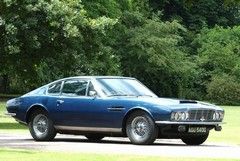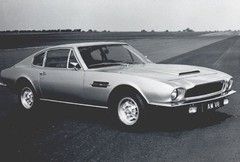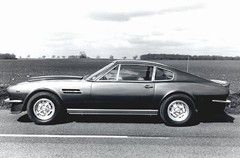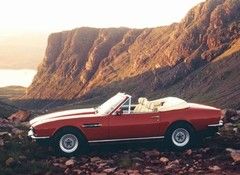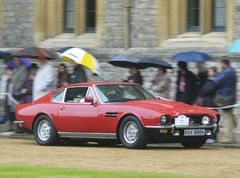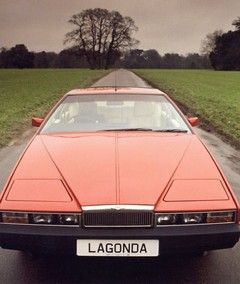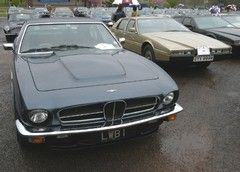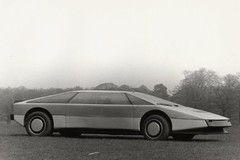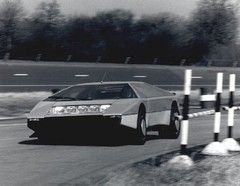Aston’s new age
AM's future looked bleak 30 years ago but, as Andrew Noakes explains, rescue and new models were just around the corner.
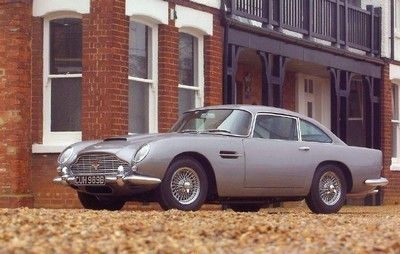
Iconic: Aston Martin DB5 at the Newport Pagnell plant in 1963
Bankrolled by industrialist David Brown, Aston Martin achieved a lot between the end of the Second World War and the beginning of the 1970s. It had sold more cars than ever before, with the DB4/5/6 series of the 1950s and 1960s (with such distinguished customers as the Prince of Wales and one James Bond, Esq) accounting for half of all Aston production since 1913. The company was building Britain’s fastest cars and offering a true rival to the front-engined Ferraris of that era. Aston Martin had also become a force in sports car racing, with numerous race wins – including the ultimate, the Le Mans 24-hours in 1959, which helped to seal that year’s World Sportscar Championship for Newport Pagnell.
But big profits had never been among Aston Martin’s achievements. David Brown was happy enough while Aston Martin were winning, because the sports cars’ success rubbed off on the rest of the David Brown group. But, by the 1970s, the group was struggling financially, and Aston Martin still wasn’t making money. Under pressure from his advisors, Brown finally sold out in 1972 to a property developer called Company Developments. Brown had bought Aston Martin for £20,000 in 1947, but he sold it for just £100.
End of the David Brown era
Company Developments, it was said, was committed to the future of Aston Martin and Lagonda. Some assets, like the Newport Pagnell sports ground, were sold off to cover Aston’s debts but, at the same time, new investment helped Aston Martin to become self-sufficient, where previously it had relied on other parts of the David Brown group for chassis manufacture. And soon there were new models on show.
But these new cars, restyled and improved versions of the existing DBS V8 and (six-cylinder) DBS Vantage, had been under development during the David Brown era and though they were simply called the Aston Martin V8 and Vantage, they even carried David Brown’s name to start with as old stocks of badges were used up.
In 1973 further revisions were announced, most notably the installation of downdraft Weber carbs on the V8, a welcome change from the troublesome Bosch mechanical injection of earlier cars. Reliability and drivability were better than before, and fuel consumption marginally improved – but not nearly enough to help Aston Martin weather the fuel crisis of 1974.
The road to ruin
Following the Yom Kippur war in the Middle East, oil prices soared, and petrol prices soared with them. Suddenly Aston Martins were not just expensive to buy and run, they were also seen as anti-social at a time when petrol rationing books were being issued to motorists. Worse still, Aston Martin could not look to the affluent US to keep sales strong because the V8 engine was not yet certified for US emissions regulations.
Amid all this, another new model was announced in 1974. It was a big brother for the two-door Aston V8 – a longer four-door version with Lagonda badges, which had been planned as far back as 1966. A foot longer than the Aston, it incorporated a modified version of the new two-headlamp nose with a subtly different grille shape.
Despite thoughts that the Lagonda might attract a new clientele only seven were built, and Aston Martin’s financial position steadily worsened. Appeals to the government for a loan to help finance emissions work on the V8 were turned down, and with that Aston Martin’s fate was sealed: at the end of 1974 the company went into voluntary liquidation. It looked like the end.
AM owners ride to the rescue
The Aston Martin Owners Club had other ideas, launching a campaign to raise money to get the factory going again. Owners and enthusiasts posted cheques to Newport Pagnell, and children even donated their pocket money. In Britain, Aston owner Alan Curtis expressed an interest in reviving the company, and so did a consortium of businessmen from North America. In August 1975, they came together when Curtis met American Peter Sprague and agreed to become an Aston shareholder. The following year Curtis would take on a more hands-on role as Aston Managing Director.
Progress was swift. Production restarted, and the dubious build quality of the cars during the transition period was significantly improved. Meanwhile more new models were being prepared.
AM brushes with futurism
The most famous of them was the ‘wedge’ Lagonda which was sketched out by William Towns in February 1976 and, remarkably, appeared as a prototype at the Motor Show in October that year – though production versions were still years away. The low nose of the Lagonda forced the adoption of a more restrictive intake system and, to recoup the lost power, big-valve heads were developed. The new heads were then adapted to produce a high-performance version of the V8, which went into the V8 Vantage along with running gear upgrades and aerodynamic improvements. That was the big news for 1977: the following year Aston Martin launched a convertible V8 Volante, which would become a favourite in the US.
The ‘basic’ V8 saloon wasn’t forgotten, either, with a package of detail improvements (including neater bodywork and a revised interior) known as ‘Oscar India’. Alan Curtis loved flying, and this piece of pilot-speak represented the letters O and I, standing for nothing more exciting than ‘October introduction’.
By 1979, the Lagonda was finally in production after problems with its futuristic electronic instrumentation, and there was time to restart a project which had first been mooted in 1976 – a Towns-designed gullwing supercar.
Revealed to the press in March 1980, the Bulldog, as it was called, combined a tubular spaceframe chassis with a mid-mounted, twin-turbocharged and fuel injected version of the 5.3-litre Aston V8, developing around 600bhp. It achieved 192mph on the MIRA banking, and would certainly have been even quicker in a straight line but was only a one-off.
On the road to prosperity
Bulldog showed there was plenty of bite left in Aston Martin. Though Curtis would move on in the 1980s, his place would be taken by the larger-than-life figure of Victor Gauntlett – and Aston Martin would go from strength to strength.
Links
- www.astonmartin.com (official site)
- www.amoc.org (Aston Martin Owners Club)
- www.astonmartins.com (Tim Cottingham’s excellent Aston fan site)
- www.andrewnoakes.com
Copyright © Andrew Noakes 2005
Gassing Station | Aston Martin | Top of Page | What's New | My Stuff

